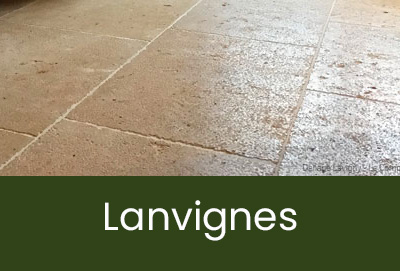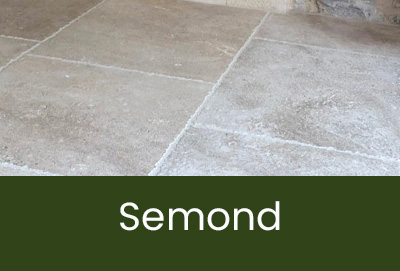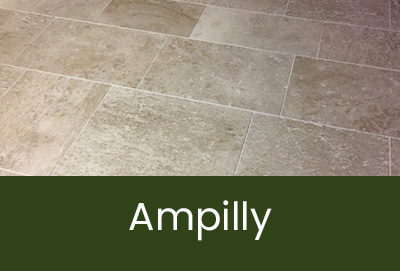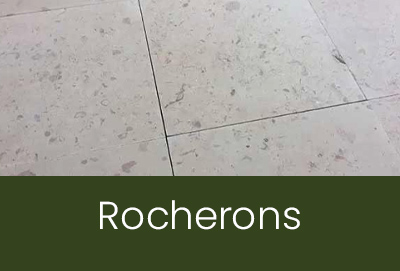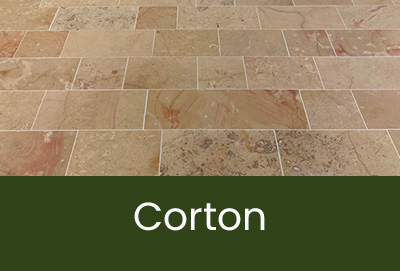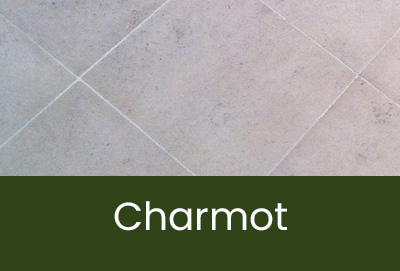How to build a stone wall?
Build a stone wall : massive stones or cladding ?
For your wall and wall construction project, whether it is for a house (landscaping, fence wall ...) or for public spaces, the first question to ask yourself is whether you want a 100% stone wall or only a wall cladding.
The criteria guiding this choice are the desired visual rendering, if there is an existing support or not, who carries out the installation (professional used to do this work or not), the budget for the project ...
In any case, a stone wall sublimates your outdoor spaces and gives character to your home, especially when it is made of natural limestone from Burgundy.
The objective of this article is to help you finetune your project on natural stone walls.
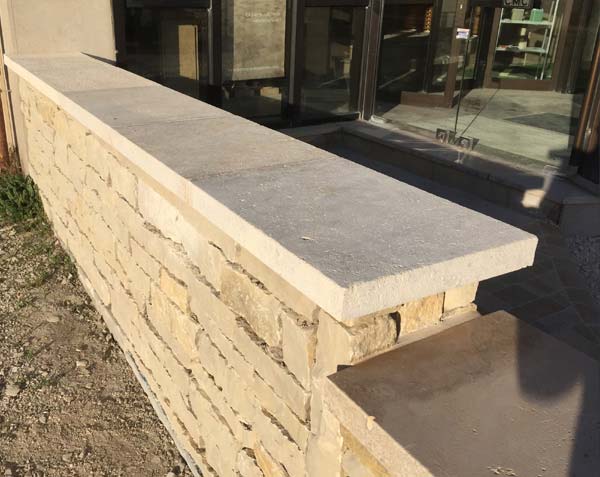
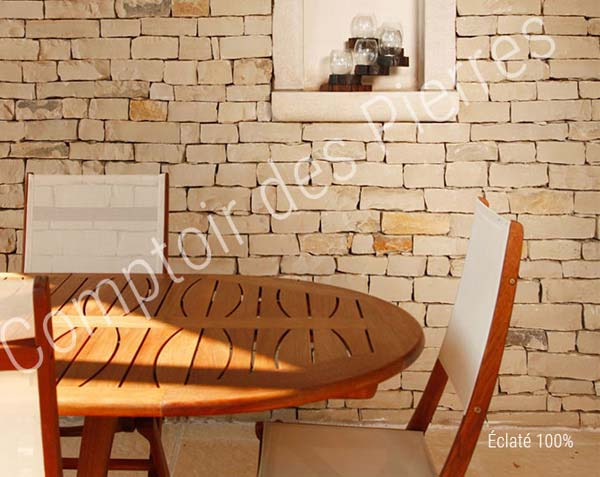
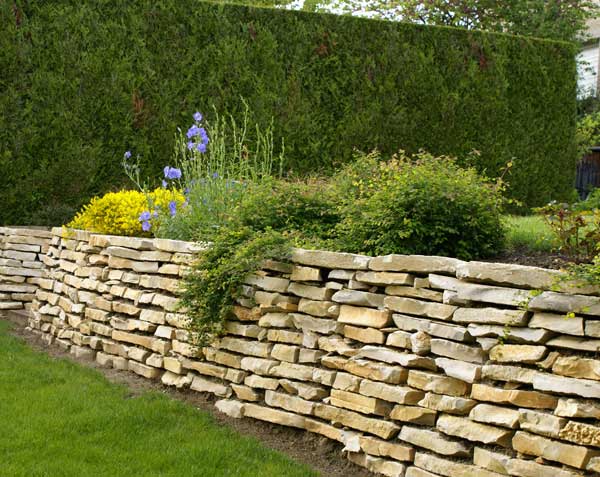
Wall cladding
For economic reasons or if a structure exists (bricks..), one may wish to only fix cladding on the structure.
Natural limestone can be fixed to cinder blocks or even Placoplatre indoors.
Two solutions are possible in terms of natural limestone :
-Thick wall cladding with a depth of 12 cm (+-1 cm). They are calibrated in depth and have to be fixed on the wall with a glue and potentially with bond coating to facilitate the hanging). The dominant color is cream beige (split finish). Indeed the fact of cutting the stone to calibrate it removes the golden-yellow cullet that is on the surface. The rendering is thus relatively modern and gives the impression of a massive stone wall due to the significant thickness of the cladding. This product is sold per pallet of one cubic meter.
- Classic wall cladding in thickness 2.5 cm (+-0.5 cm) which will be fixed also with white glue (example Prolipro by Parexlanko) on bricks or Placoplatre. White glue is preferred over gray glue (as always on natural limestone) to avoid possible efflorescences. The installation always starts from the bottom by making a first line of facing touching the ground, the second line will come to lay on the first one. This is what is called in construction the weight transfer : the weight is not only supported by the wall but also by the ground. These claddings are sold per m2. Even for a very small area (1 m2), we are able to help you in your project.
Two finishes exist : a natural finish (golden-yellow) and a split finish (cream beige). It is possible to mix the two. Indoors, cladding is often used to dress one wall of the living room or entrance. In addition, our claddings can bring a traditional touch to a cellar with cinder blocks that have remained bare after the construction.
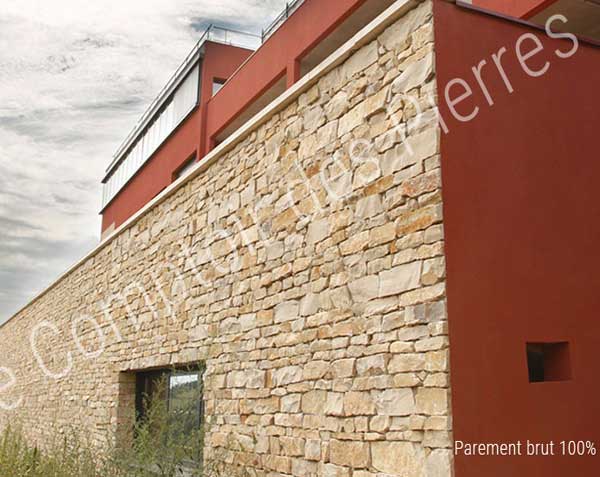
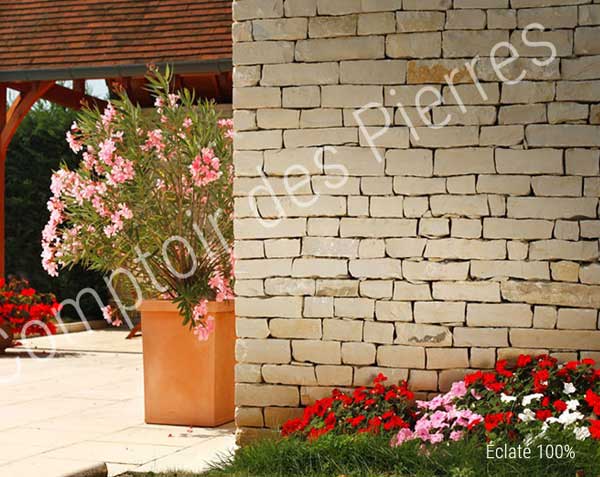
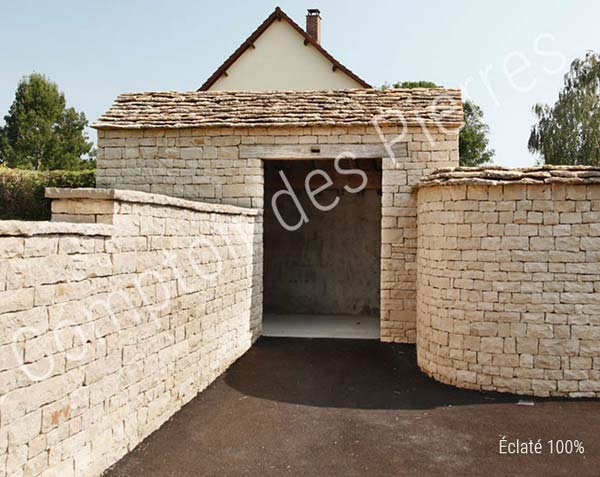
Building a wall
To build a natural stone wall, the support must be stable (concrete). The traditional materials are low-wall stones or rubble stones, the geological origin and the visual rendering are the same, the difference comes from the dimensions. Low-wall stones are smaller (6-9 cm high) than rubble stones (10-14 cm high). These stones are sold in pallets of one cubic meter. If your wall requires several cubic meters, you can mix the 2 dimensions.
The low wall stones will give a more airy side to the wall and the rubble will allow you to save time in the installation.
In terms of fixing, 2 options exist dry stone laying, which means without mortar or laying with mortar (with or without grouting).
In the case of dry stone laying, the objective will be to assemble the stones together thanks to varying depths. Thus a low wall stone wall will generally be 30 cm wide (stones with a maximum depth of 25 cm); with rubble stones the wall will be 45 cm wide (stones with maximum depth of 40 cm).
If the installation is carried out with mortar, put mortar at the back of the stones (center of the wall) to fix them together. Visually you will not see the mortar on the front the wall. We offer ready-to-use mortars as well as bond coating. If you want to fill the gaps between the stones, it will be necessary to carry out a traditional grouting.
This work can be done by a mason or by you. Building a wall is accessible for a handyman by taking its time, without wanting to go as fast as a professional !
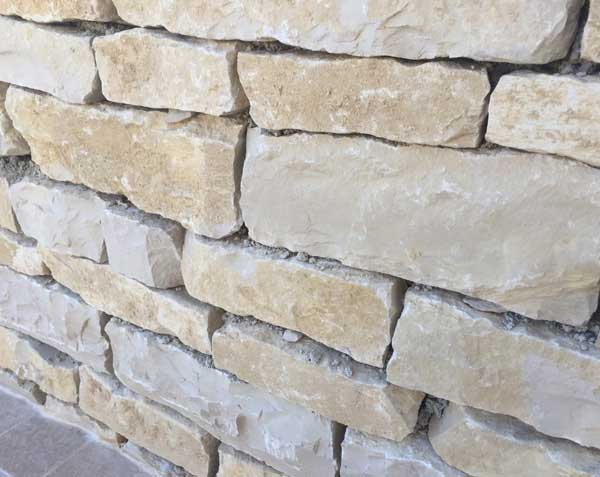
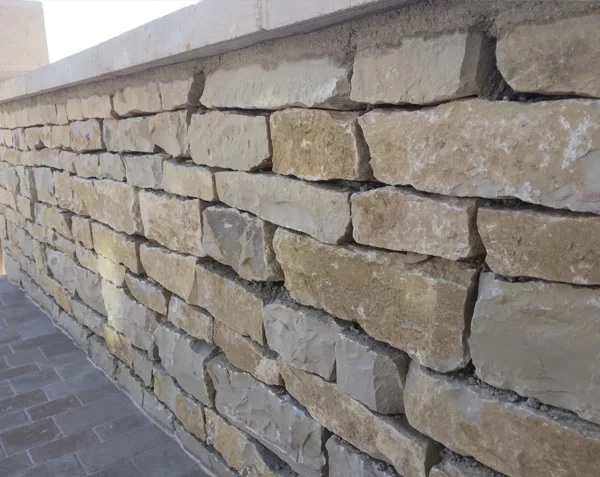
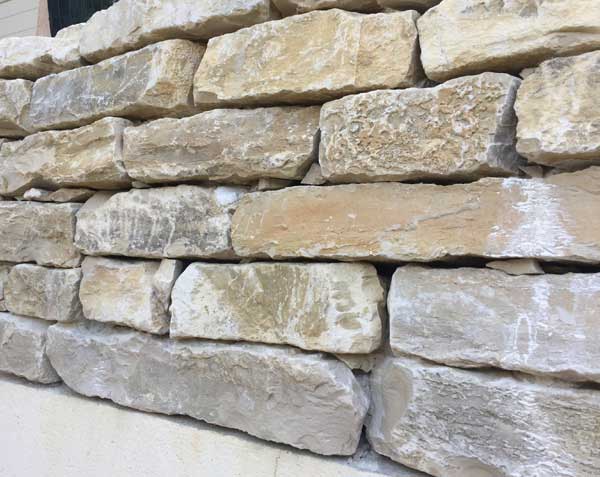
Wall copings
The top of your wall can be left without coping stones. However, for a more finished rendering (and to limit water infiltration into your wall), we recommend that you think from the beginning at the way you manage the top of the wall. Ordering the wall tops directly with the stones to build the wall allows you to optimize the shipping costs of your project.
Several options are available: the sawn coping stones from Châtillonnais, coping stones from Yonne, or the more economical opus incertum.
These wall copings will simply be fixed with white glue. The glue will also act as a leveling agent to smooth the top of the wall.
In the case of the sawn coping stones, we offer a water drip (or drip edge) on the underside. This water drip will divert rainwater runoff away from the face of the wall, thus limiting infiltration. This drip edge is particularly important in rainy regions.
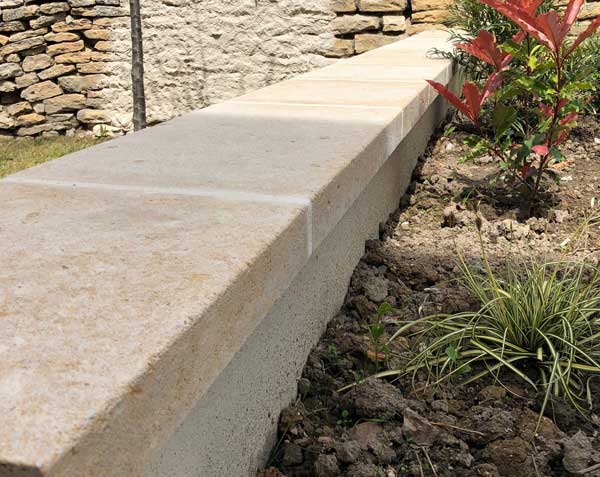
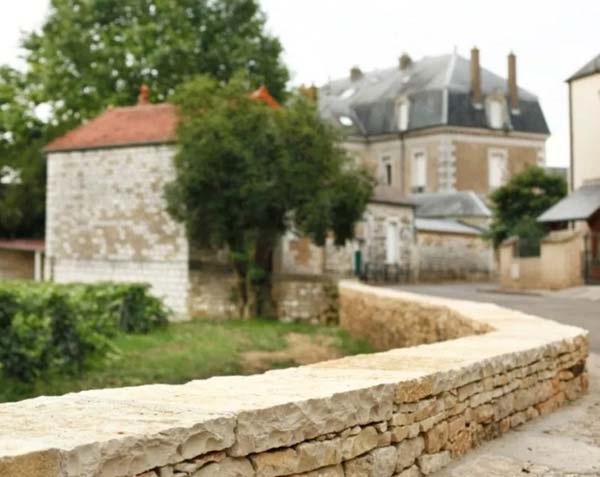
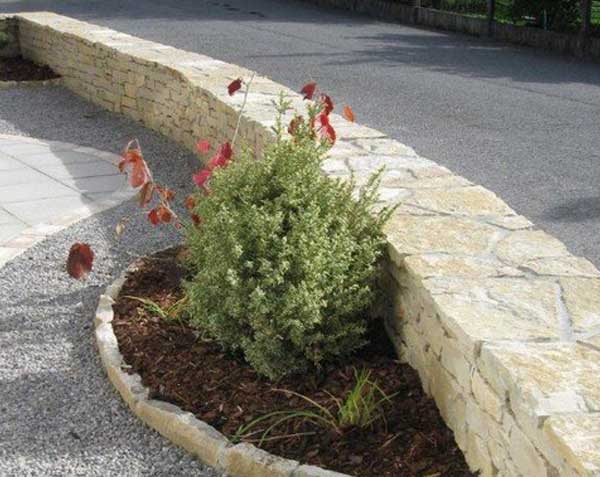
Quality of the stone : origin, extraction and frost
Burgundy limestone - Origin
Our low wall stones, rubble stones, wall cladding... are stones from the Yonne area in Burgundy (near Auxerre), it is a Protected Geographical Indication "Pierre de Bourgogne" since June 2018. This stone is recognizable by its golden-yellow color on the surface. The finish of the stone is not reworked in the workshop, we are talking about natural finishing. The stone is only cut on the sides and on the back to calibrate it.

In the event that the stone is calibrated on the 4 faces (thick wall cladding of 12 cm for example), the yellow golden color disappears and gives a cream beige color (split finish) which corresponds to the color inside the stone.
Lavière
These Yonne stones are extracted in a "lavière" composed of a millefeuille of layers ranging from 2 to 21 cm. The origin of the word "lavière" in French is uncertain. This word would refer to two potential meanings. The first: "washed" stones, i.e. stones from the bottom of the ocean. Indeed the deposit of sediment at the bottom of the sea allowed the formation of our Burgundy limestones; Burgundy being an ocean in the Jurassic ere. The second: stones "raised" because we pick up, literally we lift the stones layer after layer.
Our stones are mined only for 3 months in late spring and early summer (May-June-July) to let the stone dry from August to May the following year. At the start of the new mining campaign, last year's stones are sorted and palletized. This last stage can last up to 12 months. So when you buy our stones, they have been extracted on average between a year and a half and two years ago.
The heights of the stones we offer cannot be adapted because they correspond to the stages of the geological formation of the "lavière". Indeed, when we sell, for example, low-wall stones from 6 to 9 cm high, it corresponds to a stratum in the quarry that fluctuates between 6 and 9 cm. The most important thickness within the "lavière" is 21 cm, we use basement stone blocks. This layer is located deep in the quarry, on the other hand the first layer (from the ground perspective) with 2-3 cm thickness is used to make rough opus incertum.
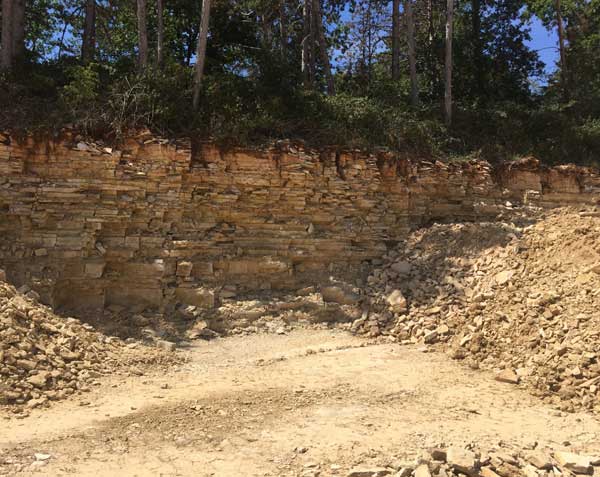
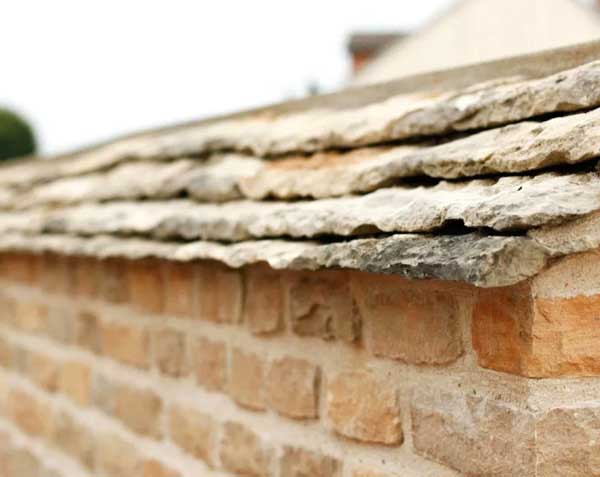
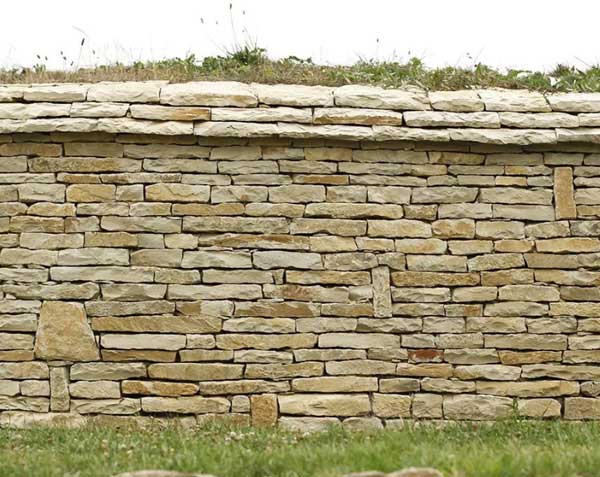
Resistance to frost
The stones are first screened to remove all earthy deposits and then spread out on the ground throughout winter to remove freezing stones. Once the most fragile stones are excluded, the Yonne limestone is highly frost resistant. Laboratory tests are showing its ability to withstand more than 240 freeze/thaw cycles without alteration. We are talking about severe frost resistance. It is thus the right stone for the northern areas of Europe and it is of course widely used in Burgundy for masonry / building and landscaping.
The price difference between suppliers is generally linked to the respect (or not) of these steps : screening, drying and spread out during winter that are most often ignored. So you will always find low wall stones cheaper per cubic meter than ours. However, pay attention to the origin, if the stone could freeze, the calibration of the stones and the more or less important presence of grounds in the pallets. In the case of a freezing stone, it will quickly disintegrate, which means that the stone will split in two most often in the horizontal direction.
Slight splinters can occur in the first winters after laying, but this does not mean that the stone freezes. This is a natural phenomenon where the stone gets rid of its most fragile parts of the bark. The stone will then be stabilized and will no longer evolve over time.
Hope we have been clear on the subject ! Do not hesitate to contact us to exchange

